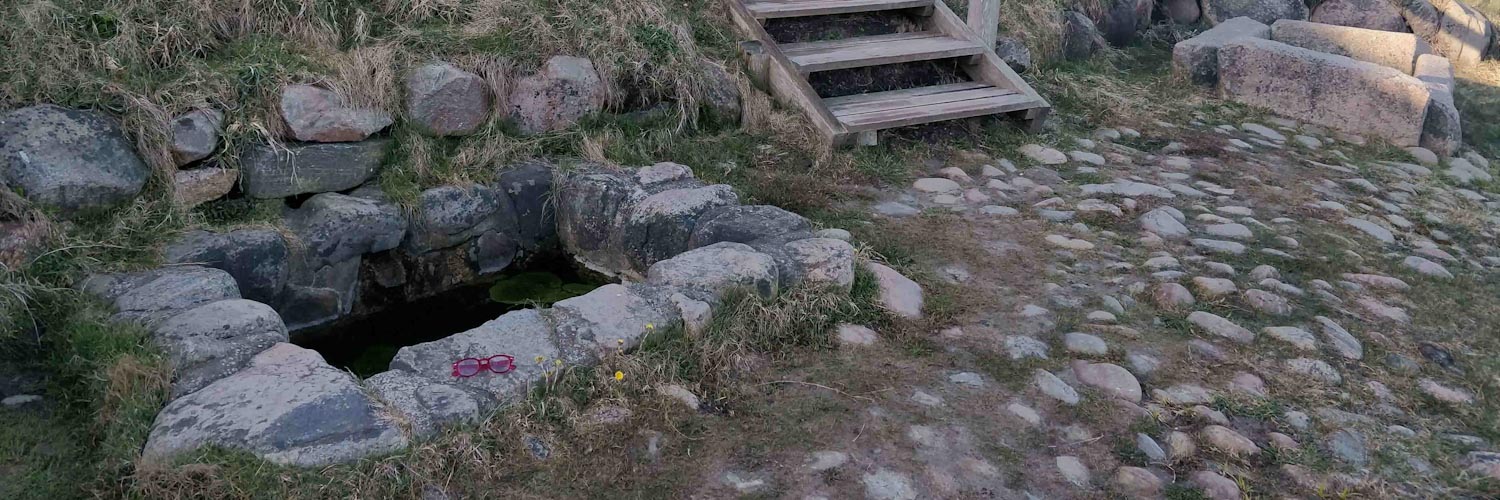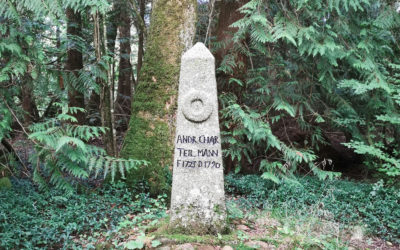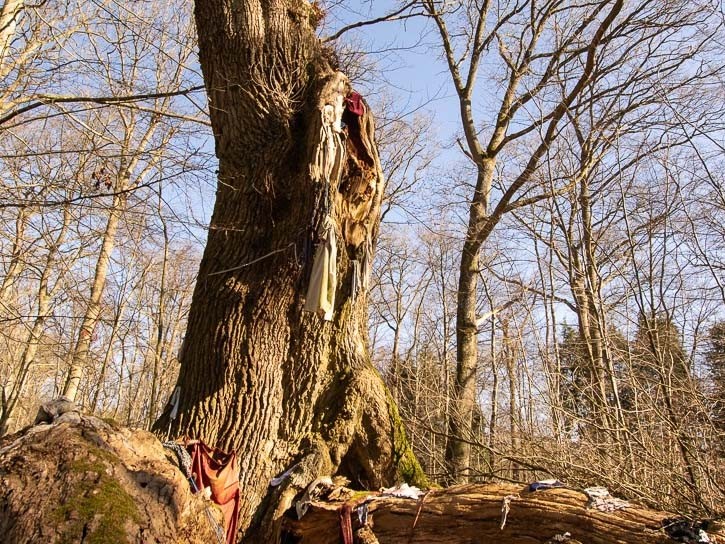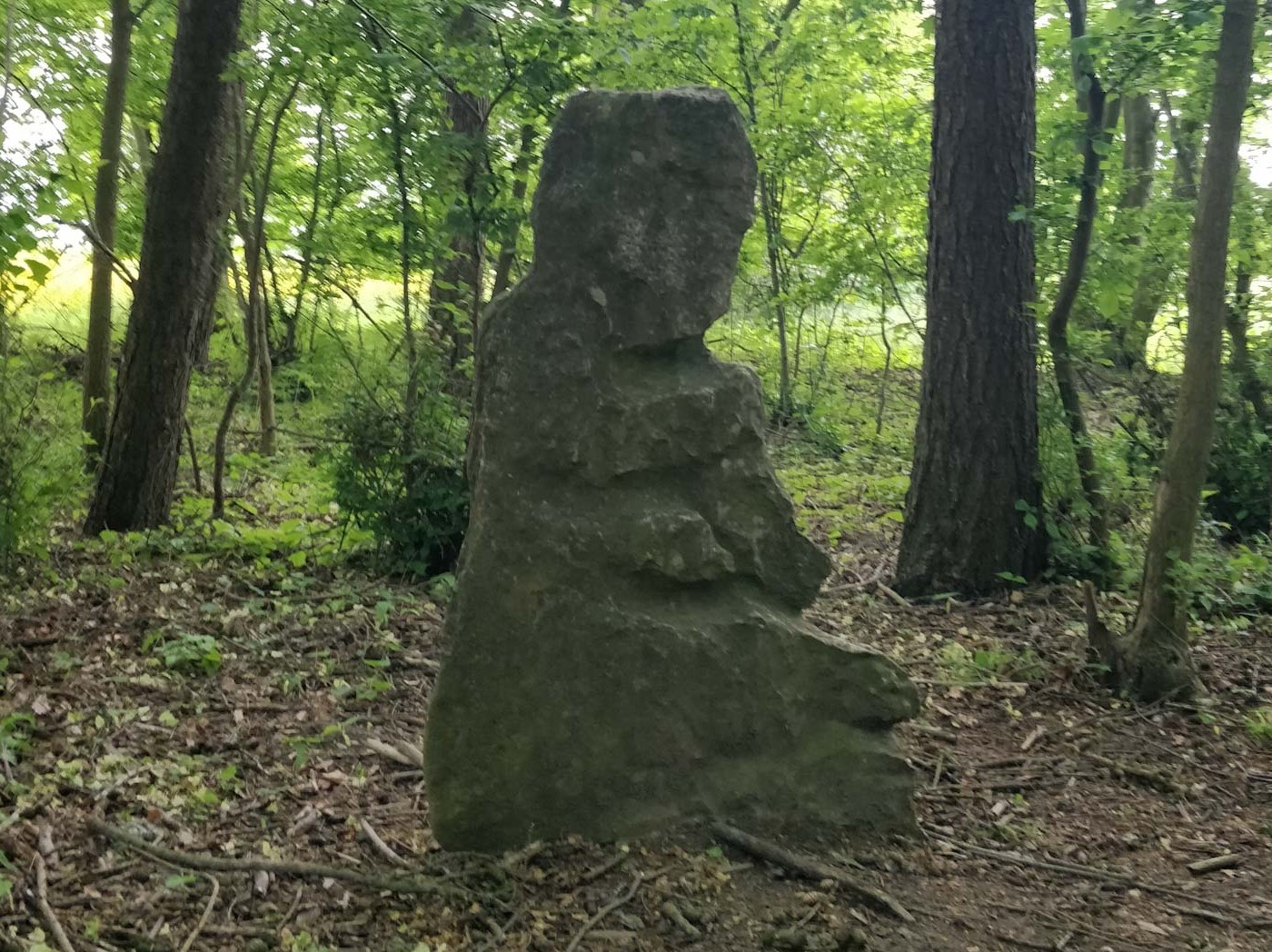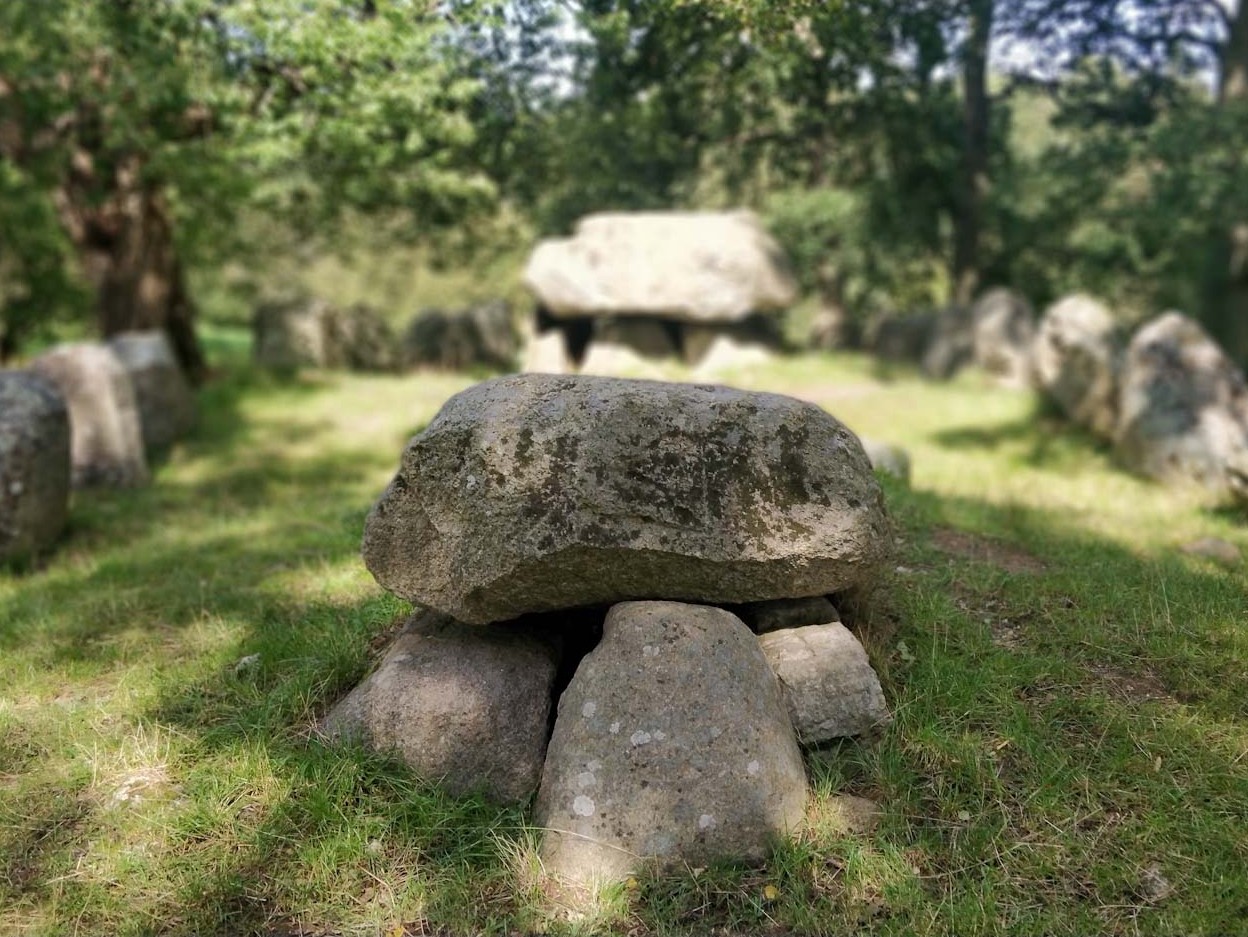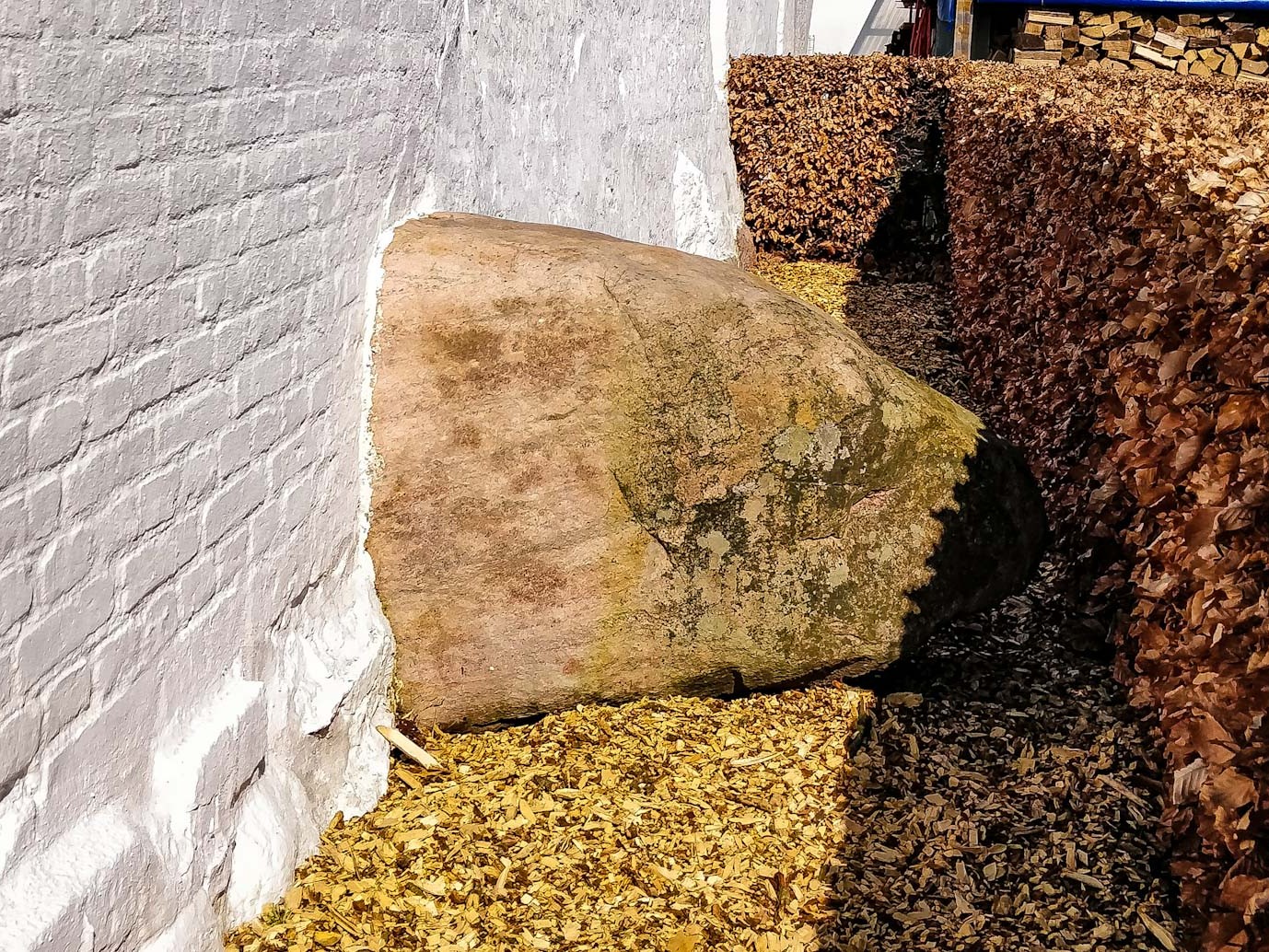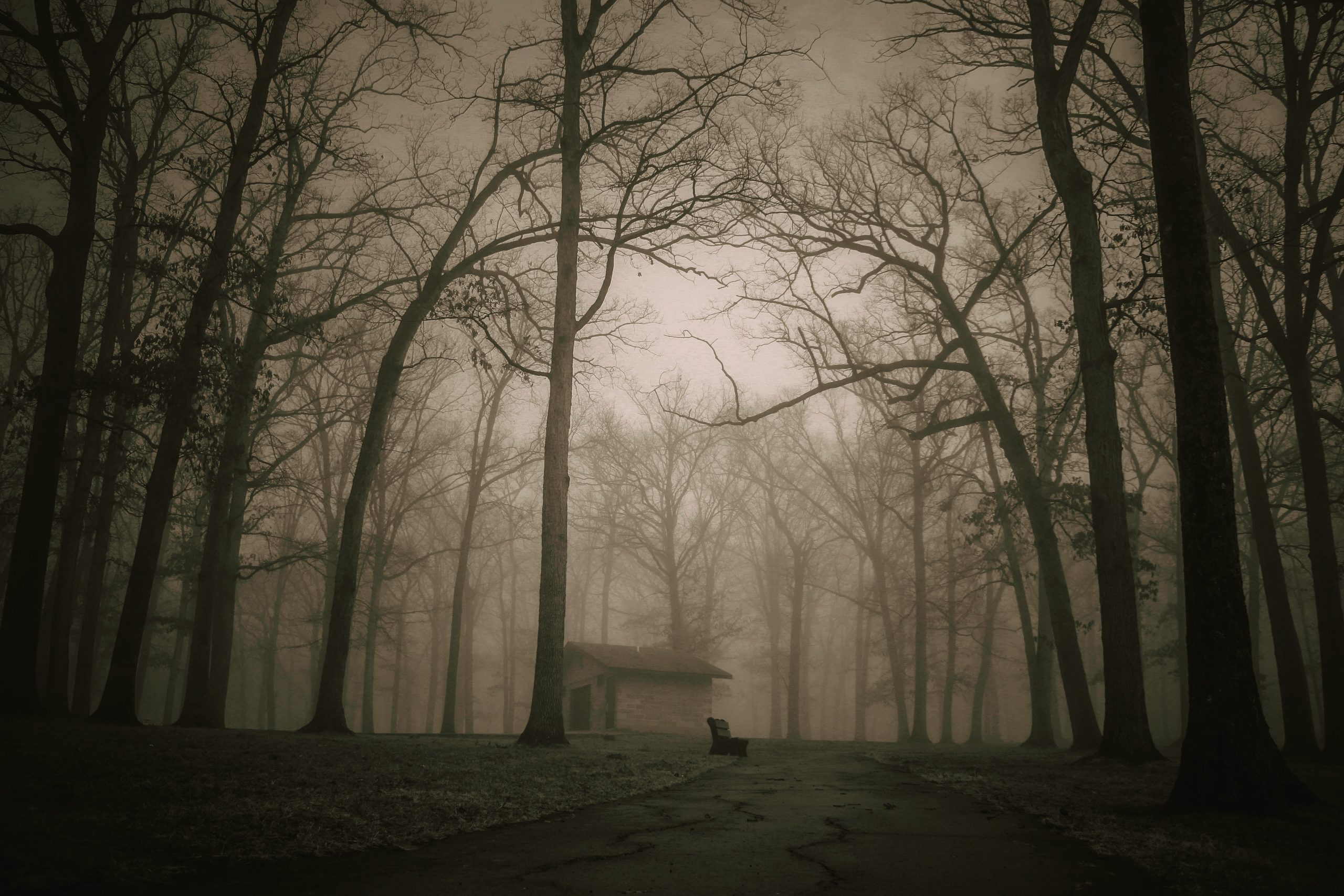GPS Links: Helene Spring: 56.0644358, 12.0790182, Helene Stone: 56.065095, 12.077621, Helene Grave: 56.0584376, 12.0838740, Helene Spring Donation Box: 56.0565674, 12.0981266
Parking: Helene Spring and Stone: At Tisvildeleje Station, Helene Grave: Nearest small street, Helene Donation Box: The adjacent road
Good To Know:
Nearby Attractions: Tofte Holy Spring
About Saint Helene
Helene’s Holy Spring & Helene’s Grave are two “sacred” locations in Tisvildeleje, both connected with the legendary Saint Helene. They are unique, insofar as being located in such a popular and well visited area of Northern Zealand. Otherwise, such relics are mostly found well off the beaten bath these days. However, it is mostly the spring, flowing from a slope near the beach, that visitors to Tisvildeleje encounter. The grave is considerably more hidden and less well known, although both have had an immense significance in earlier times.
The Legend of Saint Helene
Despite the lofty title, Helene is actually just a local “folk saint” who ended up becoming popular throughout the whole country. There are several legends about her and throughout the years she has been presented as everything from a hermit to a farmer’s girl to a noblewoman. Where all the legends agree, though, is that she was from somewhere in the south of Sweden. One day, nearly 800 years ago she was either drowned or killed on land and thrown into the sea, but instead of sinking to the bottom, a large stone emerged from the depths and carried her to Tisvildeleje.
The locals who found Helene’s body on the beach, decided to carry her to nearby Tibirke Church, but they had hardly picked her up before there was a cave in, that led to a clear path up the slope. On the way the carriers took several shorter breaks. At the spot of the first of these, water suddenly burst out from the slope and created what is today known as Helene’s Holy Spring.
The plan was to bury Helene at the graveyard of Tibirke Church, but on the way there the carriers uttered some very foul and uncourtly language. This resulted in the corpse of Helene suddenly becoming so immensely heavy that it sank into the ground, and a monument known as Helene’s Grave came to mark that very spot.
Hereinafter, both locations were deemed as sacred and, in accordance with folk tradition at the time, attributed healing powers.
Healing Effects
Both Helene Spring and Helene Grave have been used for centuries for their supposed healing properties. Ill and disabled people from all over Zealand used to flock to Tisvilde around the time of Saint John’s Eve, either to sleep on the grave, drink from the spring, or bring soil and water back home with them. Where the soil from the grave supposedly only “worked” on the eve of Saint John’s, the water was said to be potent even many the days after.
To illustrate how popular – and perhaps effective – Helene Spring really was even in more recent times, we have records from 1864 (the year of the Second Schleswig War) stating that so many crutches, canes and other motion assistance instruments were left behind after visitors, that they had to be transported away in several loads. And it wasn’t only farmers and other more simple people that used the spring. King Christian The Fourth visited on several occasions and even had a bathhouse and small residence built nearby. These, however, are now long gone.
At some point, in connection with visits to the spring in particular, a large, annually recurring fair was established. Over the years the healing aspect gradually took a back seat, with the fair developing more into a folk festival of sorts. This was of great social, cultural and economical importance for the area, and continued even after the belief in the sacredness of the springwater had all but faded completely. While these kinds of healing fairs existed in several other places around Denmark, the one in Tisvildeleje was perhaps the most well known of all.
The tradition of sleeping on Helene’s Grave as well as drinking from the spring is no longer practiced these days. The former ended already around the end of the 19th century, while the latter continued for at least some time into the 1900’s.
Myth vs reality
Most people today would probably be skeptical about the magical properties of soil and water, but even the legend about Helene that came floating on a rock from Sweden sounds too good to be true. Whether she ever existed at all, however, is another question that few even consider. Because of the name being used so prolifically and for so many years, not just in connection with the grave and spring, but in the naming of streets, local businesses, etc., we get the impression that she must have been real.
In fact, there is no solid evidence of it at all. On the contrary, it seems that the spring existed, and most likely was used, even before the arrival of Christianity. The name Tisvilde even is a modernization of “Tyr’s Væld”, væld meaning wellspring, and indicating an early connection with the Nordic god Tyr.
There is in fact a stone located on the seabed about 50 meters from the beach near the spring, which seems to have always been connected to the legend. It is 3×4 meter large, flat, and shaped somewhat like a ship. This latter fact indicates that the stone might have helped shape the legend, instead of the other way around. Helene Stone is best visited using light diving equipment.
As for the gravesite, archaeologists have recently found remnants of a 13th Century chapel at the site. With time, we may learn more about why the grounds around here came to be viewed as sacred, and if there really was a link to the spring – and perhaps to a Swedish girl named Helene.
Select Sources
- Anders Uhrskov – Nordsjællandsk folkeliv
- Arnold Olsen – Nordsjællandske Helligkilder
- August F. Schmidt – Danmarks Kæmpesten
- Bering Liisberg – Domina Helena
- Erling Agergaard – Danmarks Helgener
- Palle Lauring – Her Skete Det
Tags
In the same category…
Havfruegrunden
The Mermaid Islet, in Danish “Havfruegrunden”, was a small patch of land once located in the passageway between Slotsholmen and Christianshavn. It got its name because it supposedly was a favored place of mermaids.
Knud Lavard’s Haraldsted
Knud “Canute” Lavard is one of the most important saints of medieval Denmark. Today, however, the large majority of the population only recognizes his name because it adorns several streets throughout the country. But the memory of Knud lives on in the Haraldsted area, outside Ringsted
The Teilmann Manesten
Located deep within the woods of Nørholm in Western Jutland stands one of the few remaining “manepæle” in Denmark, with several spooky legends surrounding it

